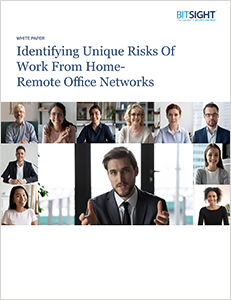In response to the COVID-19 pandemic, the world’s workforce saw an unprecedented shift to remote work. To understand how this changed the security threat for companies, we examined the data we routinely collect from internet traffic and the results were alarming.
During the period of March 2020, we looked at a sample size of 41,000 US-based organizations to understand the difference between corporate networks and Work From Home-Remote Office (WFH-RO) networks from a cyber-risk perspective.
Some attributes of Work from Home - Remote Office Networks:
Malware:
- 3.5x more likely than corporate networks to have at least one family of malware
- 7.5x more likely to have at least five distinct families of malware
- Common families of malware are extremely prevalent including Mirai, which is observed 20x more frequently, and Trickbot which is observed 3.75x more frequently
Services & Remote Management Exposure:
- More than 25% of all devices have one or more services exposed on the internet
- Almost 1 in 7 WFH-RO IP addresses have exposed cable modem control interfaces
Download the white paper to learn more about how you can secure your work from home-remote office networks.
